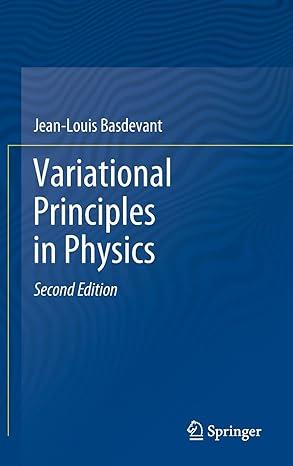We consider, in three dimensions, a particle of mass (m) placed in a potential (V(mathbf{r})), whose Hamiltonian
Question:
We consider, in three dimensions, a particle of mass \(m\) placed in a potential \(V(\mathbf{r})\), whose Hamiltonian is \(H=p^{2} / 2 m+V(\mathbf{r})\). We assume that the particle is in a bound state with a given energy \(E\).
1.Consider the physical quantity \(A=\mathbf{r} \cdot \mathbf{p} \equiv x p_{x}+y p_{y}+z p_{z}\). Calculate the Poisson bracket \(\{A, H\}\). Deduce from that the time evolution of \(A\) in terms of the variables \(\mathbf{r}\) and \(\mathbf{p}\).
We assume that the motion of the particle is periodic of period \(T\). Let \(f(\mathbf{r}, \mathbf{p})\) be a physical quantity, we define its mean value \(\langle fangle\) by Considering the mean value of \(\dot{A} \equiv d A / d t\), show that we have
Considering the mean value of \(\dot{A} \equiv d A / d t\), show that we have
3.What does this equality become if the potential \(V\) is a central power law function \(V=g r^{n}\) with \(r=|\mathbf{r}|\) ?
4.In the above case, what is the relation between the total energy \(E\), the mean kinetic energy ![]() and the mean potential energy \(\langle Vangle\) for
and the mean potential energy \(\langle Vangle\) for
(a) a harmonic oscillator \(n=2\), and ) for a Newtonian (or Coulomb) potential \(n=-1\) ?
5.In general, for an arbitrary potential, the orbits of two-body bound states are not closed curves, but they nevertheless remain confined in space. At all times, \(|\mathbf{r}| \leq r_{0}\) and \(|\mathbf{p}| \leq p_{0}\) where \(r_{0}\) and \(p_{0}\) are fixed. Give a generalization of the definition (5.62) such that the result (5.63) remains true.
Step by Step Answer:






